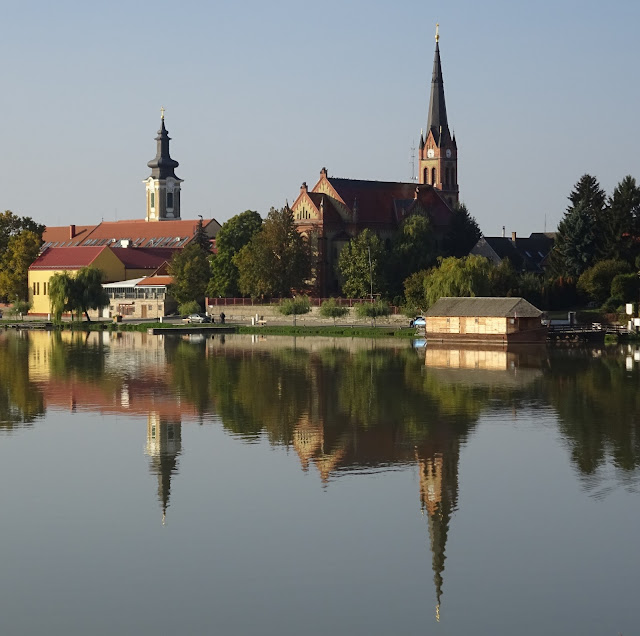 |
| Szent Ábrahámtelke, now Ráckeve as of autumn of 2020. |
According to medieval Hungarian charters, after Smeredovo fell to the Ottoman Empire in 1439, a group of Serbians fleeing from the royal free town of Kevevára, an important Danube crossing point on the southern border, wandered for months around Pest and the Szentendre Island, until they finally settled in Szent Ábrahámtelke, in what is now Ráckeve, on the island of Csepel, Hungary, a place where a ferry crossed the Danube, similar to their former home.
 |
| The fort of Kovin and the Dunavac (source) |
The formerly fortress of Keve, which was originally located on a Danubian Island, was not only threatened with destruction by the Turks (it was invaded in 1552 at the latest), but also by the condition of the southern walls of the fortress and, according to Frigyes Pesty's writing on the disappearing counties, by the Danube, or more precisely by its branch called the Dunavac, which was constantly being washed away: '"In 1879, a fall of more than a hundred metres occurred, and a considerable part of the fortress fell victim to the river again. On this occasion, several objects from the barbarian period are unearthed and news of the ancient antiquity of the settlement is brought to light."
 |
| Keve county in the Kingdom of Hungary (source: C. Tóth Norbert) |
After the peace treaty of Passarowitz liberated Temesköz, now known as Banat, from Turkish rule, the world changed so much that the southern Hungarian counties, such as Keve County, like Bodrog County, were searched in vain by experts in the revival of the contemporary administration, who, based on military considerations, finally turned part of its territory into a military frontier, and its seat was no longer called Kevevára, but Kovin.














.jpg)



